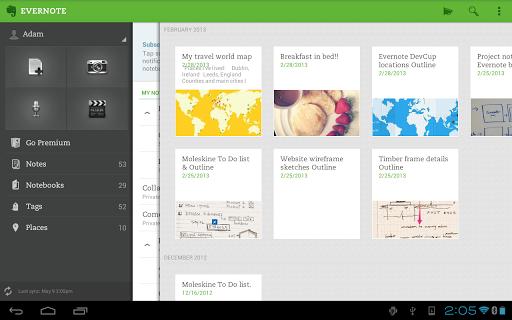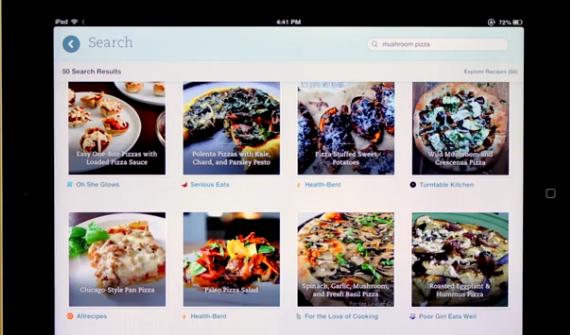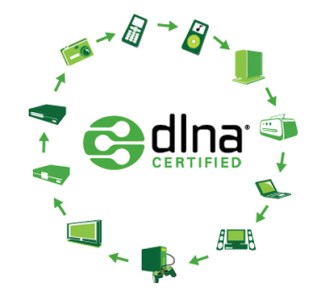Problems organizing daily work tasks? Don’t worry. If you are not already familiar with the definitive personal organizer, Evernote, we will tell you all about it here.
Daily work generates an enormous amount of information that becomes increasingly difficult to manage. This is especially true when this information comes from different sources. It may be e-mails, news items or websites, and other times hard documents and non-digital information, to which we must add hand-written notes, alarms on your telephone calendar, a multitude of sticky notes and even desperate scribbles on your hand. On top of this are a goodly number of personal matters to take care of.
Organizing all the information of interest generated day after day -including information related to our private life- can sometimes seem an impossible task. The basic requirement for order is a box in which to place everything considered useful. The next step is being able to find a specific item in this storage space. Lastly, the container must be accessible from any location, to avoid the frustration of forgetting to bring your planner or the document you saved on your workplace computer.
The Evernote application fulfils these three requirements. It is a service that allows documents to be stored in various formats, images, and websites, as well as making personal notes and keeping track of your e-mails by classifying everything by means of a label system that enables fast and accurate searches. It synchronizes with the cloud so that its content is accessible from any device with an Internet connection. At this time the software is available for Windows, Mac and Windows 8, as well as iOS, Android, BlackBerry and Windows Phone.
Storing all kinds of informatione
Evernote is a platform conceived as an integral, all-purpose solution. The slogan selected by its namesake company to promote its products describes it as a «second brain», and this is the function that the application is meant to provide. Its content is created on notebooks that can be opened for each new topic or project. Within them, you can add notes such as written text or associated documents. The information is classified by a label system that makes it easier to find what you need at a later time.
The service allows you to open a note and write on it directly, just as you would on a paper planner or a notebook. You can also save locally stored files on a note, whether Word, PDF, Power Point or practically any other format. In addition, if you find an link on the Web you can save the page to view it at a later time by clicking on a dedicated button in the browser.

You can also store hard documents such as invoices or business cards, suitably labelled to allow them to be located at a later time, with the help of a scanner or even by photographing them. Evernote’s integration also extends to e-mail. Who hasn’t lost time desperately searching for a specific information item in their inbox? The application has an inbox to which you can send e-mails when you read them. These will automatically appear as a new note, including any attachments.
The visual content is another of Evernote’s strong points. To save an image, simply drag it to a new note from its location on your computer or, if it is on the Internet, from your browser. This allows all pictures made with your smartphone or tablet to be grouped, along with those taken with your camera and saved in an external drive.
In addition to the classification system, Evernote includes a text recognition tool for images. You can photograph a document and identify the words included in it, or do the same for a sign in an urban environment. The service also recognizes text in handwritten notes with some variability depending on the handwriting. These words are used when making searches.
List management is one more facet of Evernote. You can make a note of work-related tasks -or your shopping list, for example- and delete the notes after you have completed the tasks. This functionality can also be used to create lists of technical terms or vocabulary in foreign languages, to help learn a new language. In addition you can add a cooperative touch: you can share your notes in Evernote with your contacts and even edit them collaboratively with the paid versions.

The organization and search systema
Information is saved according to two variables: the notebook and the labels. The latter allow for classifying the information, more intuitive browsing and finding the desired item. The label system is set up gradually as content is added to the account and must be catalogued. When there are sufficient notes, their identifying tabs will repeat and it becomes increasingly unnecessary to add new ones.
A label operates as a space that includes the entirety of the content related to it, identified as such by the user. You can catalogue a note according to the meeting in which it was made, the type of document it contains, the issues it deals with or the project to which it belongs, for example. Notebooks constitute a more vertical type of format. They can be created for a general topic and subsequently branched into sub-notebooks.
Searches for content are based on labels and notebooks, but you can also search for text in documents. This means that you can find a specific word in the jumble of text included in e-mails, websites, files and handwritten notes. The paid version enables this function for Word or PDF files.
Reminders
These are the other great feature of Evernote, if we’re considering its role as a storage container as the main feature. Any note can include a reminder, to which a date can be added. There is a list showing all reminders saved by the user. After completing the task or when the date has passed, the reminder can be deleted. When the selected date or time approaches, the service can send e-mail alerts reminding the user of the upcoming event.

When you open a notebook you can see the reminders in it and the notes specified as such. This task replaces the alarms on telephones or services such as Outlook, and is also an alternative to online calendars. The traditional leather-bound planner can also become a thing of the past thanks to this functionality of Evernote.
Prices
All of these functionalities are included in a free version. Data storage is limited to 25 MB per note for free users and 100 MB for premium users. However, the advantages of the paid version go beyond this. For 5 euros a month (or 40 a year) you can upload 1 GB per month, obtain off-line access to notebooks and allow other users to edit notes. Images are also recognized faster and you can search for text in scanned documents, Word and PDF files, and files in other formats.
In addition, there is a corporate version that provides functionalities intended for a user community and corporate productivity options, not just personal. It costs 10 euros a month for each account activated.









